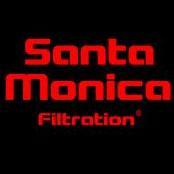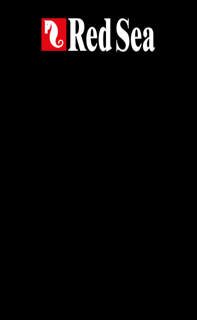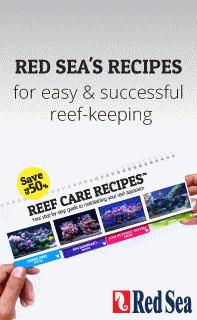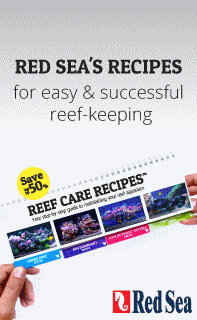Mega Powerful Nitrate and Phosphate Remover - DIY!
-
Topics
-
Latest Update
-
2
-
2
-
0
微信:A746103619办理TUB柏林工业大学毕业证成绩单留信认证 Technical University of Berlin diploma
微信:A746103619办理TUB柏林工业大学毕业证成绩单留信认证 Technical University of Berlin diploma ◆【方式咨询】 微信:A746103619 ------------------------------------------ 业务类型- -------------------◆--------------------------------------------◆ 【主要项目】: ★★毕业证、成绩单--OFFER--真实可查留信网认证等! ★办理各地各大学个别(一对一专业服务,可全程监控跟踪详情) -- ---------------◆---------------------制作工艺---------- -------◆---------------------------------------------◆ 【高仿真】: ★★凭借本公司多年的制作经验制作《激光》《水印》《钢印》《烫金》《凹凸》凹凸版,uv版等防伪技术一流,高精仿度几乎跟学校100%一致!让您绝对满意----------------- ◆---------------------操作周期-------- -----------◆-------------------------------------------- 【高效率】 ★★本公司承诺各位顾客在最短时间内制作完成并交货。只要您身在何处,只要您有需要,我们就以最高效的办事效率满足您的需求,如果我们没有您想要的办事那么只要您能提供的版本我们就可以为您专门开版办理一周内完成。 ---------------------------------- ----------公司理念-------------------------------------------------- ------------◆ 【主要版权】: ★★我们以质量求生存,.以服务求发展有外观的实力,专业的团队咨询顾问为您细心解答,可详谈,真是假,眼见为实,让您真正放心,平凡人生,尽我所能尽全力助您一臂之力,让我们圆您的梦想! ◆【公司真理】:诚信为主,质量为本,客户为先,解您所忧! ------------------------------ ------------ 业务范围---------------------------------------------------------------- -------------◆ 【主营国家】:加拿大、澳大利亚、新西兰、新加坡、美国、英国、欧洲等等-----! ------------------◆---------------------联系方式--------- ----------◆--------------------------------------------◆ 【贴心专线】:微信:A746103619 ★我们保留此联系方式,以备不时之需!如有不在线请给我们留言!我们将在第一时间给您回复! ★★此贴长年有效——欢迎各位新老顾客咨询,我们将竭诚为您服务! -
0
微信:A746103619办理波鸿鲁尔大学毕业证成绩单留信认证 Ruhr University Bochum diploma
微信:A746103619办理波鸿鲁尔大学毕业证成绩单留信认证 Ruhr University Bochum diploma ◆【方式咨询】 微信:A746103619 ------------------------------------------ 业务类型- -------------------◆--------------------------------------------◆ 【主要项目】: ★★毕业证、成绩单--OFFER--真实可查留信网认证等! ★办理各地各大学个别(一对一专业服务,可全程监控跟踪详情) -- ---------------◆---------------------制作工艺---------- -------◆---------------------------------------------◆ 【高仿真】: ★★凭借本公司多年的制作经验制作《激光》《水印》《钢印》《烫金》《凹凸》凹凸版,uv版等防伪技术一流,高精仿度几乎跟学校100%一致!让您绝对满意----------------- ◆---------------------操作周期-------- -----------◆-------------------------------------------- 【高效率】 ★★本公司承诺各位顾客在最短时间内制作完成并交货。只要您身在何处,只要您有需要,我们就以最高效的办事效率满足您的需求,如果我们没有您想要的办事那么只要您能提供的版本我们就可以为您专门开版办理一周内完成。 ---------------------------------- ----------公司理念-------------------------------------------------- ------------◆ 【主要版权】: ★★我们以质量求生存,.以服务求发展有外观的实力,专业的团队咨询顾问为您细心解答,可详谈,真是假,眼见为实,让您真正放心,平凡人生,尽我所能尽全力助您一臂之力,让我们圆您的梦想! ◆【公司真理】:诚信为主,质量为本,客户为先,解您所忧! ------------------------------ ------------ 业务范围---------------------------------------------------------------- -------------◆ 【主营国家】:加拿大、澳大利亚、新西兰、新加坡、美国、英国、欧洲等等-----! ------------------◆---------------------联系方式--------- ----------◆--------------------------------------------◆ 【贴心专线】:微信:A746103619 ★我们保留此联系方式,以备不时之需!如有不在线请给我们留言!我们将在第一时间给您回复! ★★此贴长年有效——欢迎各位新老顾客咨询,我们将竭诚为您服务! -
0
微信:A746103619办理Uni DUE杜伊斯堡-埃森大学毕业证成绩单留信认证 University of Duisburg-Essen diploma
微信:A746103619办理Uni DUE杜伊斯堡-埃森大学毕业证成绩单留信认证 University of Duisburg-Essen diploma ◆【咨询方式】 微信 :A746103619 -----------------◆---------------------业务类型-------------------◆-----------------------------◆ 【主营项目】: ★★毕业証、成绩单-- OFFER--真实可查留信网认证等.等! ★★办理各国各大学文凭(一对一专业服务,可全程监控跟踪进度) -----------------◆---------------------制作工艺-------------------◆-----------------------------◆ 【高仿真】: ★★凭借多年的制作经验本公司制作《激光》《水印》《钢印》《烫金》《紫外线》凹凸版,uv版等防伪技术一流,高精仿度几乎跟学校100%相同!让您绝对满意。 -----------------◆---------------------操作周期-------------------◆----------------------------◆ 【高效率】 ★★本公司承诺各位顾客在最短时间内制作完成并交货。不论您身在何处,只要您有需要,我们便会以最高效的办事效率满足您的需求,如果我们没有您所想办的学校那么只要您能提供版本我们就可以为您专门开版办理一周内完成。 -----------------◆---------------------公司理念-------------------◆-----------------------------◆ 【诚信为主】: ★★我們以質量求生存,.以服务求发展有雄厚的实力,专业的团队咨询顾问为您细心解答,可详谈,是真是假,眼见为实,让您真正放心,平凡人生,尽我所能助您一臂之力让我們携手圆您梦想! ◆【公司宗旨】:诚信为主,質量爲本,客戶爲先,解您所忧 ! -----------------◆---------------------业务范围-------------------◆-----------------------------◆ 【主营国家】:加拿大、澳大利亞、新西蘭、新加坡、美國、英國、歐洲-----等等! -----------------◆---------------------联系方式-------------------◆-----------------------------◆ 【贴心专线】: 微信:A746103619 ★敬请保留此联系方式,以备用!如有不在线请给我们留言!我们将在第一时间给您回复! ★★此贴长年有效——欢迎各位新老顾客咨询,我们将会竭诚为您服务!
-





Recommended Posts
Join the conversation
You can post now and register later. If you have an account, sign in now to post with your account.